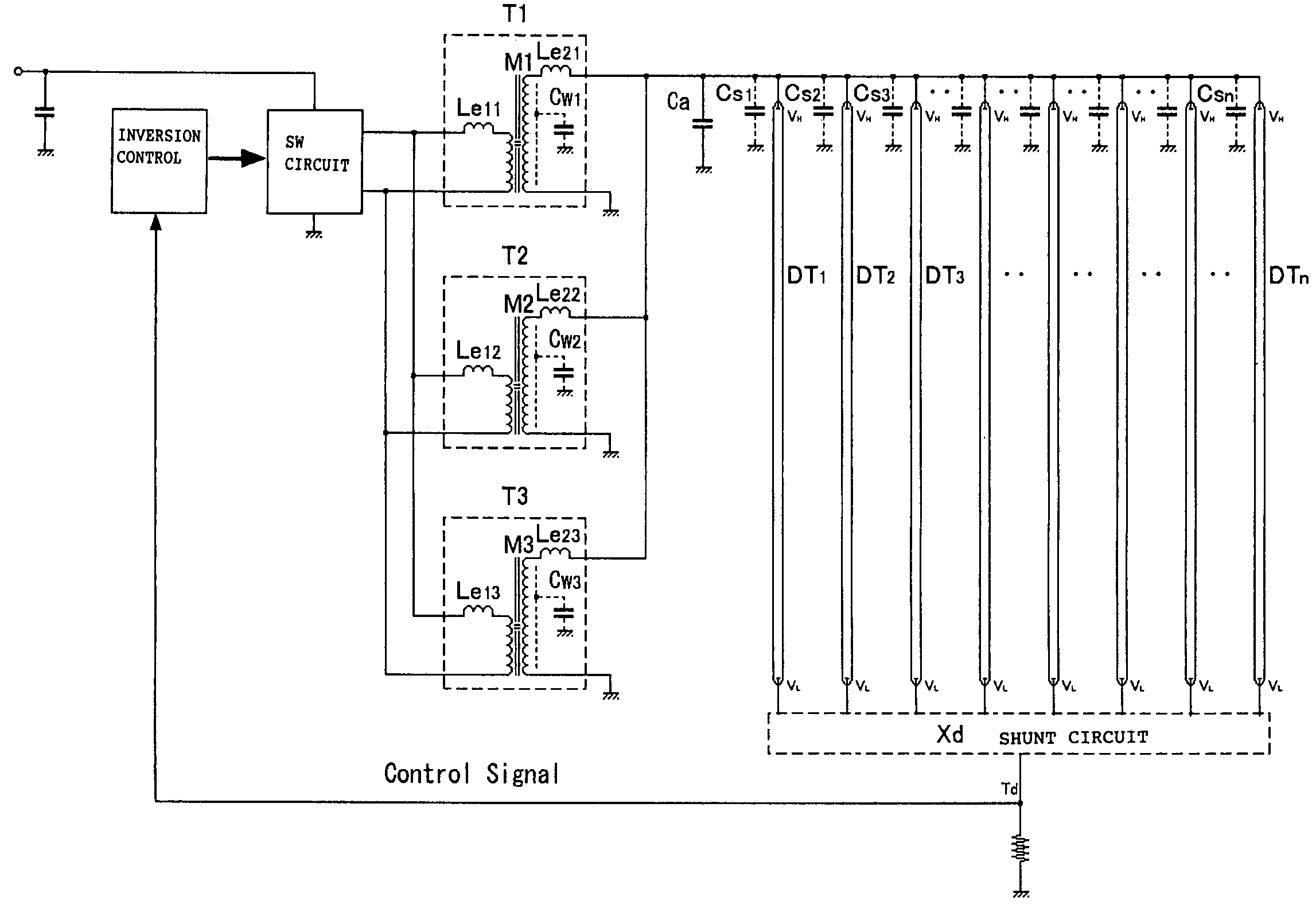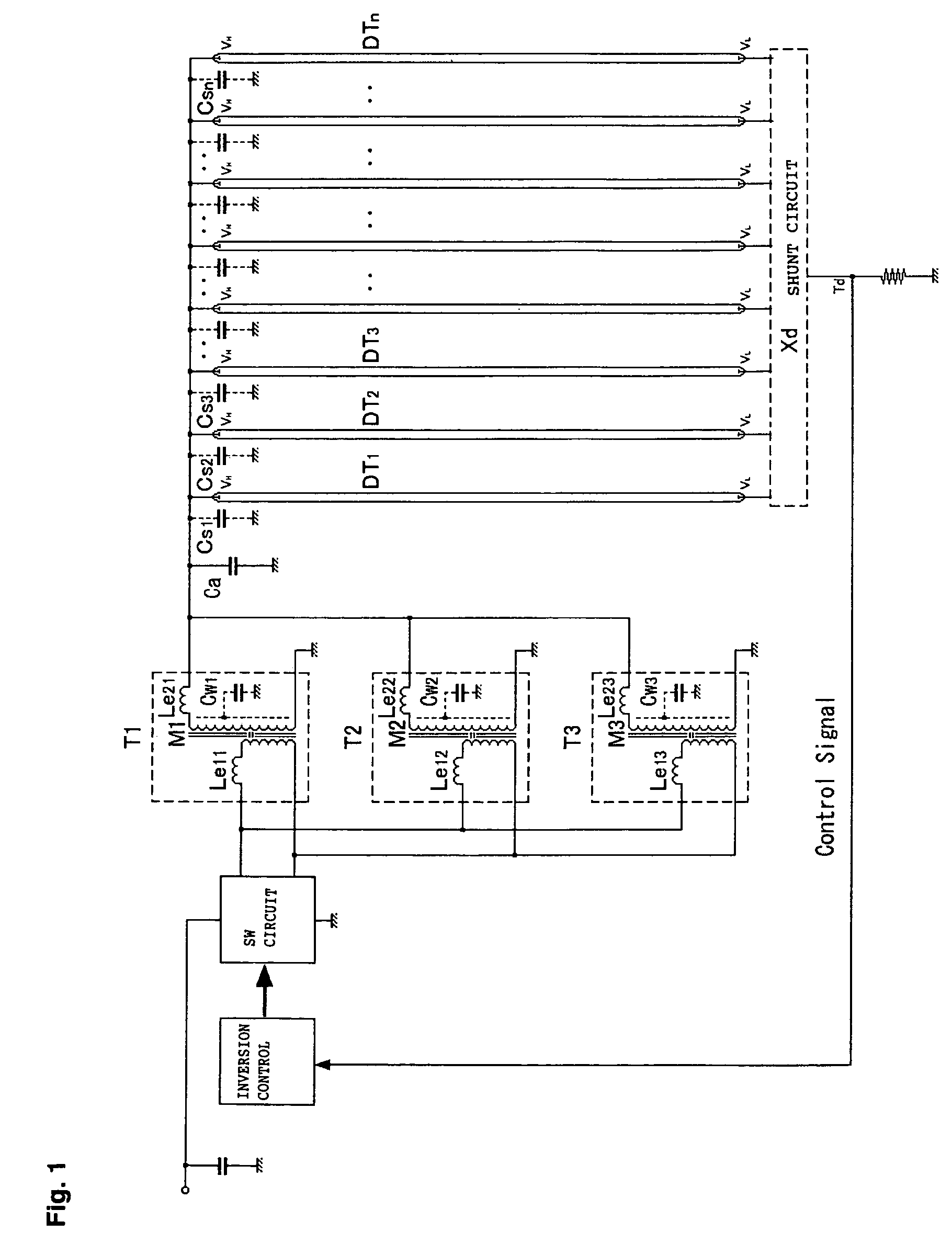Inverter circuit for surface light source system
a technology of inverter circuit and surface light source, which is applied in the direction of electric ignition installation, mechanical equipment, machines/engines, etc., can solve the problems of increasing the overall cost of the inverter circuit, difficult to drive cold-cathode fluorescent lamps in parallel, and difficulty in constant adjustment of circuit, so as to improve the degree of freedom in selecting transformers, improve the effect of winding multiple wires and improving the degree of freedom of transformer selection
- Summary
- Abstract
- Description
- Claims
- Application Information
AI Technical Summary
Benefits of technology
Problems solved by technology
Method used
Image
Examples
Embodiment Construction
[0112]A preferred embodiment of the present invention will be described below with reference to the accompanying drawings. FIG. 1 illustrates one embodiment of the present invention with a transformer shown in an equivalent circuit. As the transformer is not an ideal one, it has a leakage flux which forms an inductance or leakage inductance.
[0113]The leakage inductance is equivalent to choke coils inserted at the output of the transformer which are indicated by Le11 to Le13 and Le21 to Le23. The self-inductances L01 to L03 of the secondary windings are the series-combined values of mutual inductances M1 to M3 and the leakage inductances Le21 to Le23, though not described.
[0114]Cw1 to Cw3 are the distributed capacitances of the secondary windings, which, together with the self-inductances of the secondary windings, form the self-resonance frequency fp. Xd is a shunt circuit which lights cold-cathode fluorescent lamps in parallel and is adequately inserted according to the characteris...
PUM
| Property | Measurement | Unit |
|---|---|---|
| power | aaaaa | aaaaa |
| thickness | aaaaa | aaaaa |
| leakage inductance | aaaaa | aaaaa |
Abstract
Description
Claims
Application Information
 Login to View More
Login to View More - R&D
- Intellectual Property
- Life Sciences
- Materials
- Tech Scout
- Unparalleled Data Quality
- Higher Quality Content
- 60% Fewer Hallucinations
Browse by: Latest US Patents, China's latest patents, Technical Efficacy Thesaurus, Application Domain, Technology Topic, Popular Technical Reports.
© 2025 PatSnap. All rights reserved.Legal|Privacy policy|Modern Slavery Act Transparency Statement|Sitemap|About US| Contact US: help@patsnap.com



